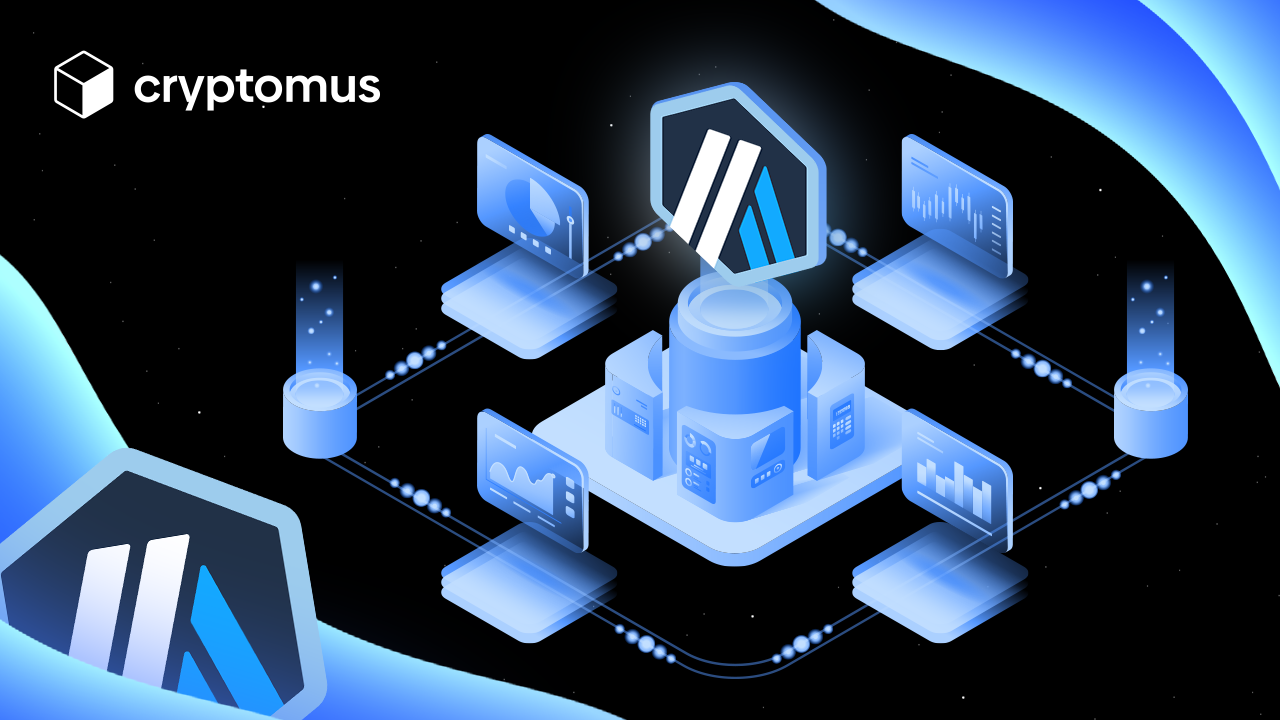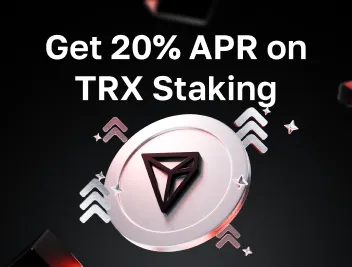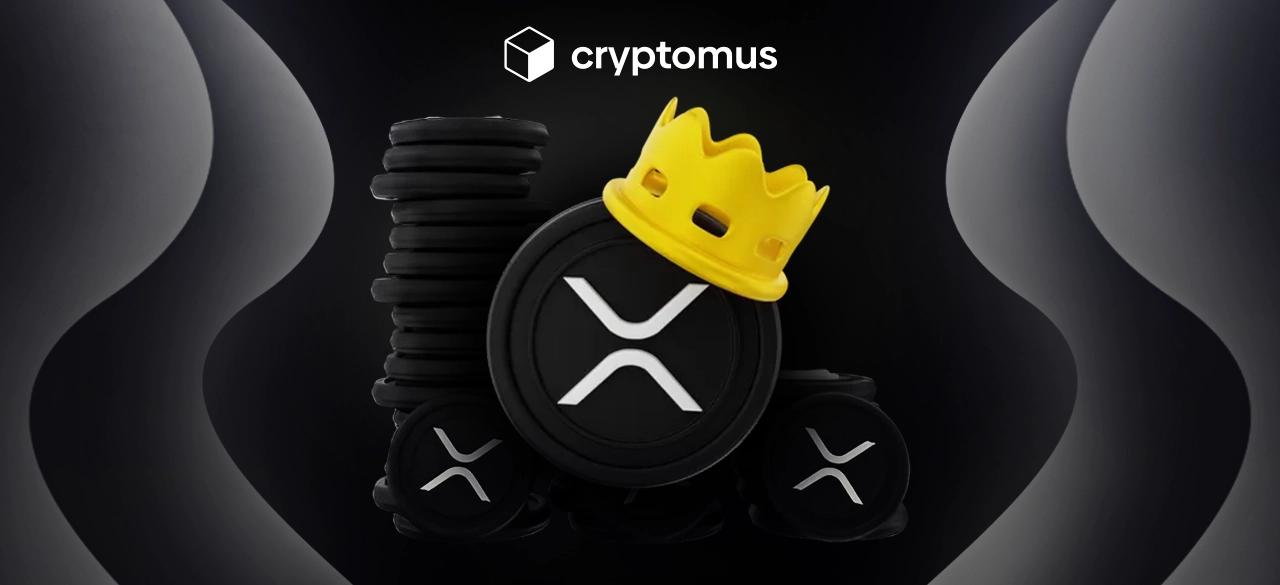
What is Arbitrum and How Does it Work?
In the dynamic realm of blockchain technology, there's a constant drive to increase speed and efficiency while maintaining the highest levels of security. Navigating this complex landscape requires innovative thinking and bold solutions that address core challenges, while ensuring system integrity.
This is where Arbitrum comes in, a new technology developed by Offchain Labs, stands as a pioneering layer 2 scaling solution, meticulously designed to redefine the paradigm of blockchain scalability and performance.
Arbitrum speeds up Ethereum calculations with Optimistic Rollup, combining security and cost-effectiveness for dApps.
Now that you know what is Arbitrum, are you ready to boost your blockchain knowledge? Ana dive into this article to uncover everything you need to know about Arbitrum.
Understanding Arbitrum's Approach
Arbitrum is revolutionizing the blockchain by addressing the scalability and efficiency of Ethereum's dApps. Through smart design and innovation, Arbitrum leverages Optimistic Rollup for fast and cost-effective dApp transactions. This approach offloads most computations from the chain, ensuring optimal performance and trust. Arbitrum is driving the blockchain industry towards scalable and user-friendly dApps, expanding the potential for widespread adoption.
Key Components of Arbitrum
Arbitrum has key components that work together to provide its remarkable functionality. To understand it , it's crucial to delve into its core principles. At the heart of Arbitrum is Optimistic Rollup, a cutting-edge technology that facilitates off-chain computation while leveraging the security of Ethereum. This approach ensures transaction integrity, significantly increases speed and reduces costs.
Arbitrum Virtual Machine (AVM):
The cornerstone of Arbitrum's infrastructure is the Arbitrum Virtual Machine (AVM). This critical component serves as the execution environment for smart contracts and computational tasks within the Arbitrum ecosystem. When exploring the question of 'Arbitrum what is?,' it is clear that the AVM plays a central role in providing the answer.
The AVM seamlessly integrates with Ethereum's EVM, allowing for easy integration with existing Ethereum applications. With the AVM, developers can deploy and execute smart contracts on Arbitrum, leveraging its scalability and efficiency. This fusion enables improved performance, profitability and accelerated adoption of decentralized applications in the Ethereum ecosystem.
Arbitrum Rollup:
Arbitrum uses Arbitrum Rollup to increase scalability and reduce costs. This critical mechanism consolidates off-chain transactions into a single batch known as a "rollup". These rollups are validated and secured on the Ethereum blockchain, ensuring transaction integrity. By intelligently aggregating multiple transactions, Arbitrum Rollup significantly improves the efficiency of the Ethereum network, enabling faster and more cost-effective processing. Users benefit from accelerated transaction speeds and reduced costs, making Arbitrum an excellent solution for optimizing blockchain operations.
Arbitrum Chain:
At the core of the Arbitrum ecosystem is the Arbitrum Chain, the primary blockchain network that powers its operations. It operates as a layer 2 solution on top of Ethereum, using Optimistic Rollup technology for improved scalability.
The Arbitrum chain seamlessly integrates with Ethereum, managing off-chain calculations while Ethereum handles settlement and dispute resolution. This integration benefits developers and users by increasing transaction throughput, lowering fees and providing the security of the decentralized Ethereum network.
The Arbitrum Virtual Machine (AVM), Arbitrum Rollup and Arbitrum Chain work together to enable efficient and scalable distributed applications within the thriving Arbitrum ecosystem.
How Arbitrum Achieves Scalability and Performance
Arbitrum's core goal is to enable fast and cost-effective transactions on the Ethereum network. Leveraging the power of Optimistic Rollup, it does this by aggregating multiple off-chain transactions into a single batch, reducing congestion and significantly improving scalability. But how does Arbitrum do this?
How Does Arbitrum Work?

At its core, Arbitrum operates through an innovative approach known as Arbitrum One, so what is Arbitrum One? It is a variant of Optimistic Rollup; it combines the benefits of off-chain execution and the security of the Ethereum blockchain for efficient transaction processing and dispute resolution. So what exactly is Arbitrum One? It is a scaling solution that aims to improve the scalability and performance of the Ethereum network. To bridge this, users can follow a simple process to transfer their assets from the Ethereum network to Arbitrum. This bridge enables interoperability between the two networks, providing users with increased scalability, reduced transaction costs, and the ability to take advantage of its optimistic rollup approach.
How to Invest in Arbitrum: Capitalizing on the Future
As Arbitrum gains momentum, investors are eager to explore its potential. Investing in Arbitrum means acquiring native tokens, which serve as a key component of the ecosystem. These tokens can be acquired in various ways, such as participating in token sales or participating in decentralized exchanges. It is important to conduct thorough research and due diligence before investing in any cryptocurrency.
Utilizing Arbitrum: Harnessing the Power
To take advantage of Arbitrum, users can leverage its functionality for a wide range of decentralized applications (dApps). By connecting to Arbitrum, dApps can experience remarkable improvements in speed, cost efficiency and overall performance. Developers can use the Arbitrum Virtual Machine (AVM) to deploy smart contracts, while users can seamlessly interact with different applications within the ecosystem.
How Does Arbitrum Make Money?
Arbitrum generates revenue through transaction fees. Users pay fees to use computing resources on the network. These fees support sustainability and incentivize validators.
Arbitrum improves the scalability and performance of Ethereum. By bridging and leveraging this platform, users gain access to new possibilities in decentralized finance. Understanding how Arbitrum works positions individuals and businesses at the forefront of the blockchain revolution.
Understanding how Arbitrum works As the decentralized financial landscape continues to evolve, staying on top of the latest developments will be critical. Leverage the power of Arbitrum and unlock a future of scalable and efficient blockchain transactions.
Security and Consensus Mechanisms: Ensuring Trust and Reliability in Arbitrum
Arbitrum, Offchain Labs' scaling solution, ensures security and consensus for dApps. Optimistic Rollup enables off-chain computation while preserving Ethereum. Fraud proofing detects malicious behavior and preserves transaction integrity. Arbitrum uses decentralized governance for collective decision making. These mechanisms ensure a secure and scalable environment for users and developers. Arbitrum builds trust, reliability and transparency. As it evolves, Arbitrum maintains security and consensus, encouraging the adoption of dApps.
Benefits and Use Cases of Arbitrum
Arbitrum brings significant benefits to the blockchain ecosystem, increasing scalability and speeding up transactions. By consolidating transactions, it reduces costs and makes applications more accessible. Users enjoy a better experience with faster confirmations and smoother interactions. It integrates seamlessly with Ethereum's EVM, promoting compatibility and interoperability. Use cases include decentralized exchanges, gaming platforms and DeFi protocols, benefiting from improved liquidity, real-time interactions, lower fees and higher composability. Arbitrum is paving the way for a scalable, efficient, and user-friendly blockchain future.
Interoperability with Ethereum: Unlocking Seamless Integration
Arbitrum seamlessly integrates with Ethereum, enabling a smooth transfer of applications and infrastructure to the Ethereum ecosystem. Developers and users benefit from improved throughput and lower fees while maintaining the security of Ethereum. Leveraging Ethereum's consensus ensures dispute resolution. Interoperability supports projects seeking scalability without losing their user base. Arbitrum advances the blockchain ecosystem
Getting Started with Arbitrum
Are you ready to experience the power and scalability of Arbitrum? This article will guide you through the process of how to use arbitrum?
Setting Up an Arbitrum-compatible Wallet
First, set up an Arbitrum-compatible wallet such as MetaMask or Trust Wallet. Configure it to connect to the Arbitrum network and you're ready to go!
Using DApps and Smart Contracts on Arbitrum
With your wallet ready, explore the world of DApps and smart contracts on Arbitrum. Enjoy faster transactions and lower fees compared to the Ethereum mainnet. Just select your favorite DApps and start interacting with them using your wallet.
Bridge and Token Transfer Mechanisms
Arbitrum's bridge and token transfer mechanisms allow seamless movement of assets between Ethereum and Arbitrum. Transfer tokens from Ethereum to Arbitrum to take advantage of efficiencies and lower costs. You can also transfer tokens back to the Ethereum mainnet when needed, so the question now is how to bridge to arbitrum?
Follow these steps to get started with Arbitrum. Set up an Arbitrum-compatible wallet, explore DApps and smart contracts, and use the bridge for token transfers. Join the future of efficient blockchain transactions with Arbitrum.
Limitations and Challenges
While Arbitrum offers significant improvements in scalability and efficiency, it faces certain limitations and challenges. Understanding these aspects provides a well-rounded perspective on Arbitrum's potential impact and areas for further development.
• Security Considerations:
Arbitrum relies on the underlying Ethereum network for its security. Any vulnerabilities or attacks on Ethereum could impact Arbitrum. Robust security measures and continuous monitoring are essential to maintain the integrity of the Arbitrum ecosystem.
• Centralization Concerns:
Arbitrum centralizes off-chain computation, raising concerns for decentralization advocates. Balancing scalability and decentralization is challenging.
• Latency and Finality:
Optimistic rollup increases scalability but adds delay to transaction finality. The challenge period allows for dispute resolution, which affects speed. Research is underway to minimize this delay.
• Developer Adoption and Ecosystem Growth:
Arbitrum's success depends on attracting developers and fostering ecosystem growth. Providing comprehensive resources and documentation is crucial for developer engagement.
• Interoperability and Compatibility:
Ensuring blockchain interoperability and Ethereum infrastructure compatibility is critical for widespread adoption. Setting standards for seamless communication and data exchange is a complex task.
In conclusion, addressing security concerns, balancing centralization and decentralization, optimizing latency and finality, driving developer adoption, and ensuring interoperability are critical to advancing Arbitrum and the broader blockchain ecosystem.
Rate the article








comments
0
You must be logged in to post a comment